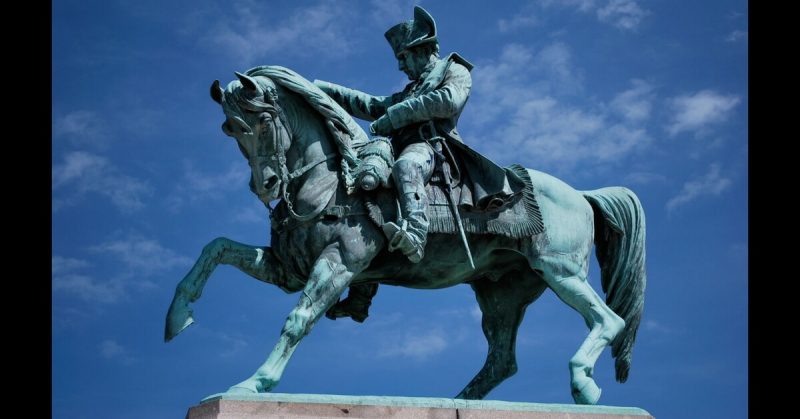Napoleon Bonaparte was one of the most influential generals in history. Combining the ideas of the foremost military theorists of his era with the study of the great generals of antiquity he transformed the way the French army fought. His opponents adapted to try to match him. Future generations studied, developed, and adopted his techniques.
What did Napoleon do that was different?
Movement
Napoleon placed great emphasis on movement as a part of warfare. This was best demonstrated during his Italian campaign of the 1790s. Taking his troops back and forth across the country, he repeatedly outmaneuvered the Austrians and their Piedmontese allies. It allowed him to fight battles at a time and place that suited him. He picked the enemy forces off one by one, rather than allowing them to combine.
A hundred years later, this style of battle still dominated the thinking of European military commanders. The First World War was led by men committed to a war of movement who, against all the evidence, persisted in believing it could be achieved.
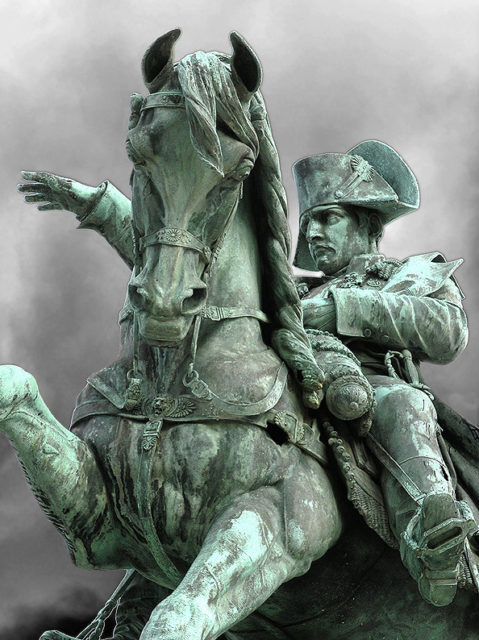
Artillery
Napoleon’s grasp of mathematics as well as tactics and command made him a skilled artillerist. It was in this branch of the military that he began his rise to power. By using artillery to quell a riot in Paris, he gained the favor of the government.
Unsurprisingly, he was an innovator in this field. He pushed the French military toward field guns which were on average a third lighter than those of their British opponents. This allowed the guns to be moved quickly around the battlefield and used to their best effect.
He also focused the power of his guns. Instead of spreading them out to provide support for the infantry, he collected large mobile batteries. Their coordinated firepower could make significant dents in enemy formations. This was the predecessor of the ever-growing batteries of the next hundred years.
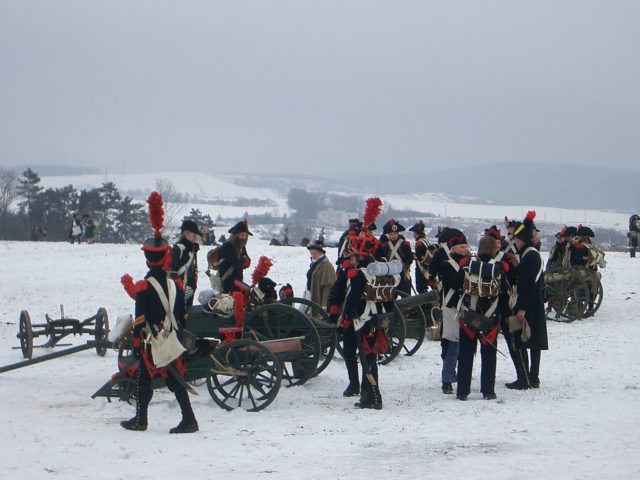
Supplies
The change Napoleon made to supplies was hardly a novelty, but it was important to the way he fought.
In a reversion to tactics common in the Middle Ages, Napoleon aimed to feed his armies from the land rather than transporting large volumes of supplies with them. It had two advantages in supporting his war of movement. Firstly, it meant his armies were unburdened with the weight of supplies and the slowness of wagon trains. Secondly, it made him less dependent on supply lines back to France, making him less vulnerable to enemy maneuvers.
This tactic was the exact opposite of the great innovator of a century before, the Duke of Marlborough, who had shifted the emphasis onto purchasing supplies to ensure good will.
Corps Organisation
The organization of the French army changed under Napoleon. He divided his forces into corps capable of operating independently and then coming together for battle. Each corps could march and fight separately if called upon to do so. They could move faster than if the whole army marched as one.
Under the leadership of gifted corps commanders, these divisions proved useful on the battlefield as well as on the march. They became the main units of the French army, providing the large scale structure of the French army in battle.
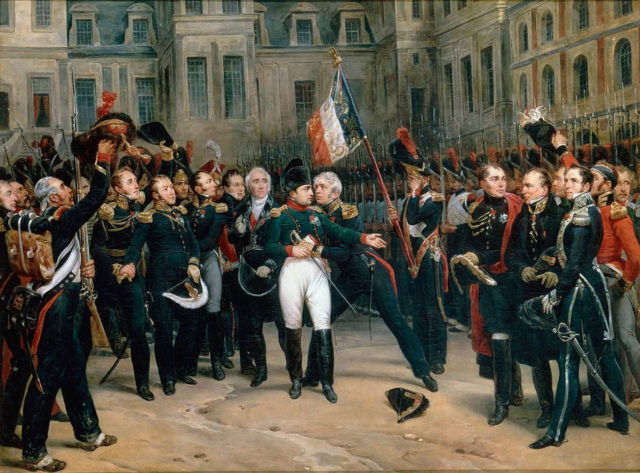
Focus on Destruction
Although Napoleon’s methods were about outmaneuvering the enemy, his aims were unequivocal. Unlike many of his predecessors, he focused on bringing about the utter destruction of the enemy armies. The goal was not just to defeat or dislodge them. It was to smash them decisively in a single battle, removing their ability to fight and forcing them to negotiation on his terms. It was an approach that was replicated a century later in the attempt of General Haig in WWI to wear down enemy resources past the ability to fight.
Scale of Warfare
Napoleon’s strategic objectives were not the only thing that made his wars hugely destructive. The vast scale of Napoleonic warfare played a part.
The French Revolution had set this change in motion. To defend the country and export its radical values, republican governments needed large armies. They established conscription for the first time in modern European history.
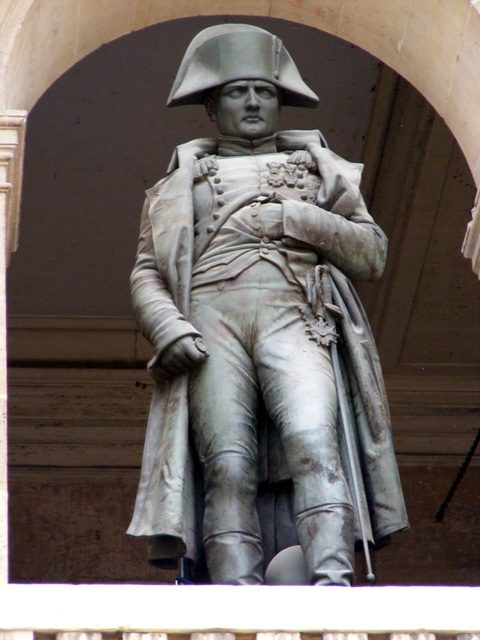
Napoleon developed these conscription laws and used the troops they provided. With them, he fought wars on a previously unprecedented scale. From Portugal in the West to Russia in the East, all Europe heard the cannons roar.
Move onto the Rear
Napoleon popularized two specific military strategies.
One of these was the “Manoeuvre De Derrière” – the move on the rear. It involved marching the army around the enemy and onto their lines of communication. Thanks to his living off the land, Napoleon was less vulnerable to the negative impact of this maneuver, which could cut off supplies and make the enemy nervous.
Once cut off in this way, the enemy army was forced to turn around and face Napoleon. He could choose where to fight. The enemy knew they could not afford to lose and were demoralized by being outmaneuvered in this way.
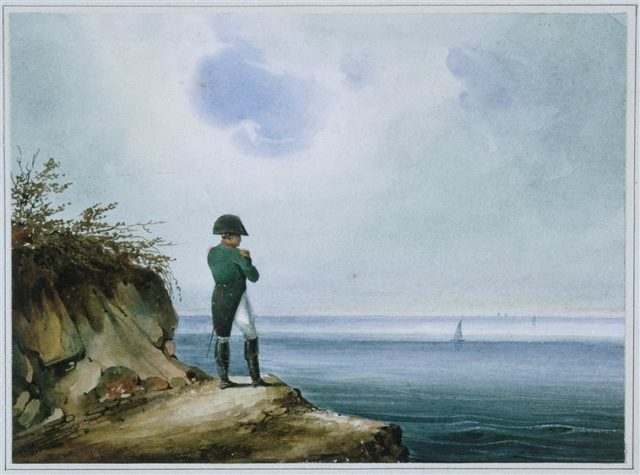
Central Position
The other strategy was the central position. Napoleon used this when he faced more than one enemy or an enemy army that had become divided. By holding a central position, he could split his enemies apart. He would hold one off with a relatively small part of his army, while he defeated the other force.
Not all Napoleon’s changes were radical but all played a part in shaping modern warfare.
Sources:
Geoffrey Ellis (1991), The Napoleonic Empire.
Alan Forrest (2011), Napoleon.
Robert Harvey (2006), The War of Wars: The Epic Struggle Between Britain and France: 1789-1815.
Alistair Horne (1996), How Far From Austerlitz? Napoleon 1805-1815.
